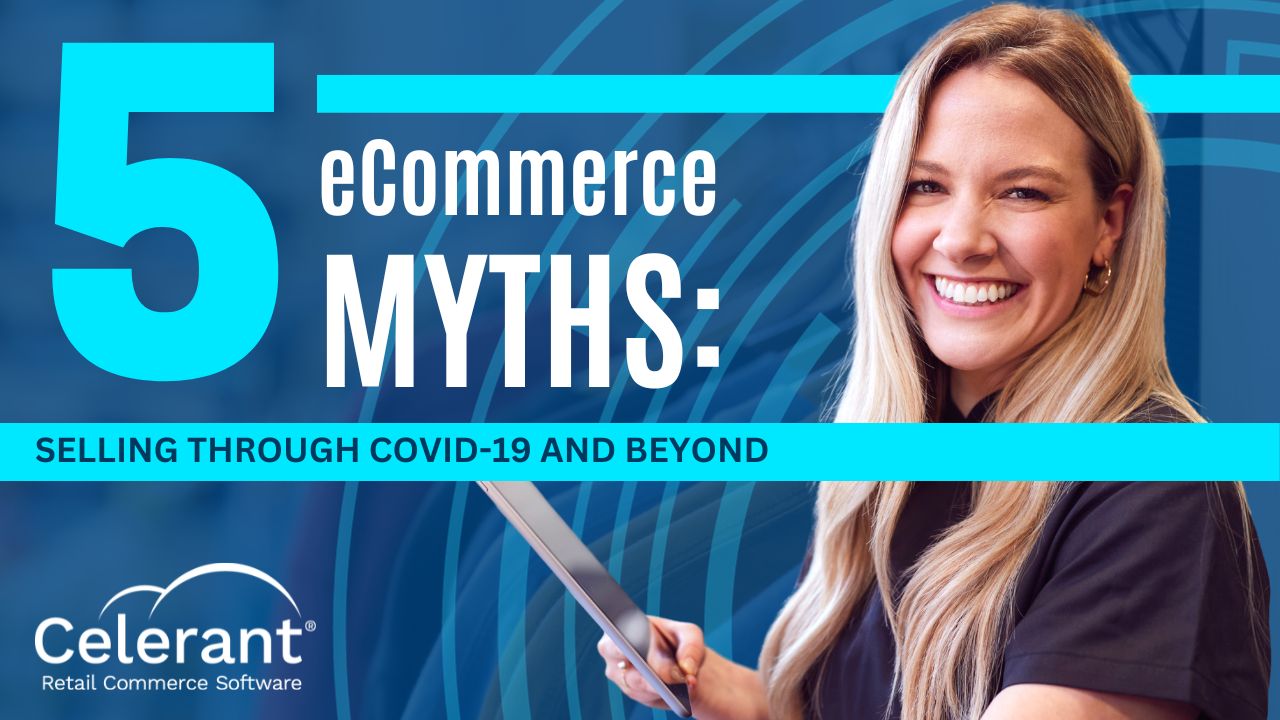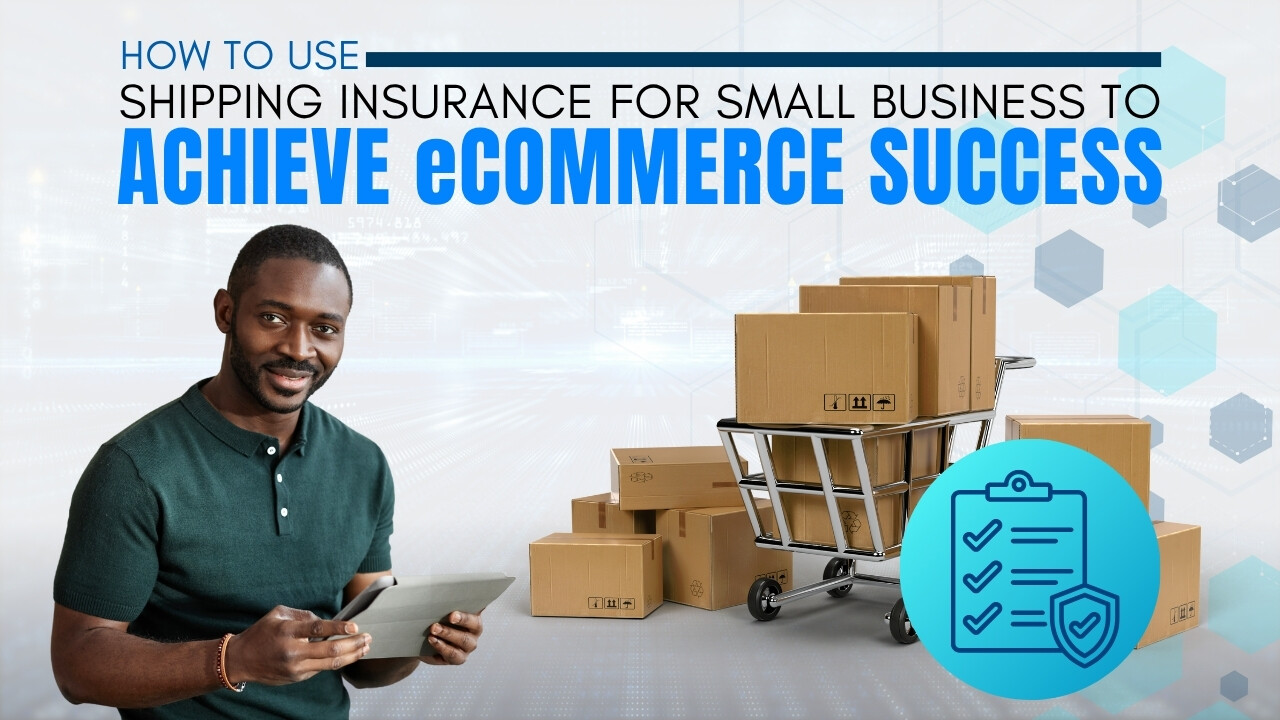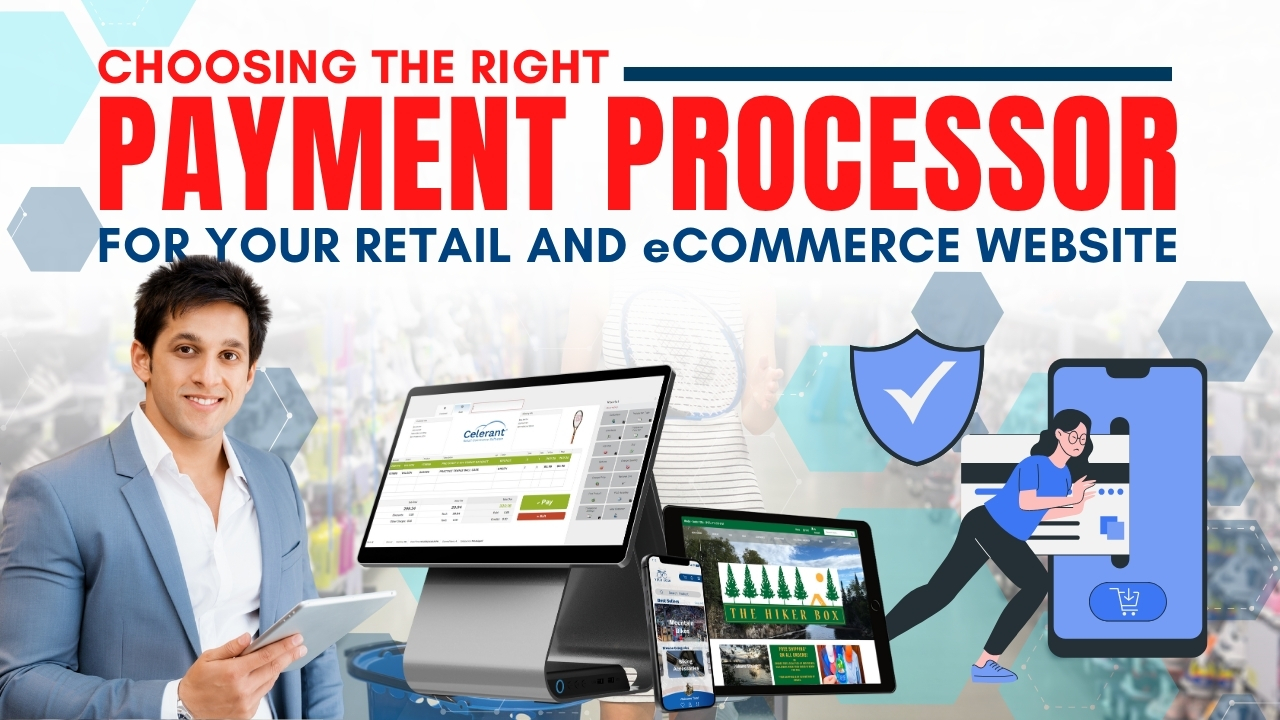Blog
5 eCommerce Myths: Selling Through COVID-19 And Beyond
October 4, 2023 / 6 minute read / By Zoya Naeem

Blog

In the last 6 months we’ve seen a massive shift in consumer spending from brick and mortar stores to eCommerce websites. While this shift is leveling out a bit from its peak, experts agree that retail has been forever changed. If you are considering launching, or relaunching, an eCommerce website you may have questions or concerns about what that process looks like in 2020. In this blog we’ll debunk 5 common myths surrounding launching & marketing an eCommerce website.
If it has been a while since you launched, or considered launching an eCommerce site you will be pleasantly surprised to find that new technology has made launching a website cheaper, easier and faster than ever before.
The first major advancement has been in the content management systems (CMS) that eCommerce websites are built on top of. Modern content management systems can be configured to use ‘templates’. A template provides the base structure of the website and then allows you to customize the look and feel of the site from there. You can add your branding, color schemes, page designs, images and more to make the site your own. Many also support ‘drag and drop’ functionality making the design process even easier.
Related article: Benefits of POS and CRM integrations for retailers
If you’ve ever launched a site in the past you know that one of the most time consuming processes is getting your products online. This used to mean taking pictures of all the products you carry or attempting to collect the photos from your vendors, entering product dimensions, UPC codes, sizes/style options, and then writing descriptions for each product you carry. Today, much of this work can be automated with vendor feeds or integrations. With a vendor feed you can simply select the products which you sell and all relevant information, including images and product descriptions, can be automatically imported to your website, busting this time-comsuming eCommerce mtyh (and Point of Sale).
While the process of launching a site has become quicker and easier, it does still require some time & expertise. If you don’t have in house resources to launch an eCommerce site, many technology providers, such as Celerant, have evolved to become ‘full service’ eCommerce providers. Meaning they can design the website, handle data conversion, host the site, launch the site and some even offer digital marketing services such as search engine optimization and email marketing to help jumpstart your online business.
In this guide, we are breaking down the seven digital marketing techniques that can be a game-changer for every retailer out there.
Between 1999 and 2019, eCommerce sales have grown year over year, every single year. In 2019, pre COVID, it is estimated that 250 million Americans made at least one purchase online. Now, fast forward to 2020; COVID-19 has caused an explosion in eCommerce sales. According to a study by Adobe Analytics the pandemic has accelerated the growth of eCommerce by 4-6 years.
As you can see by the above graph, eCommerce sales are significantly outpacing the previously estimated amounts. It’s important to note that while much of this growth is due to previous online shoppers purchasing more, and a greater variety of goods, online a good portion of this growth is from first time online shoppers. Historically, elderly populations adopted online shopping at lower levels than other groups, however due to health & safety concerns many have become accustomed to ordering online. All of this is to say that even if your customers’ were not shopping online 6 months ago, they are now.
There has never been more ways to promote your eCommerce site than there are today. Additionally, each marketing platform can be used in countless different ways. However, you don’t need to be a marketing expert to get started building your online business. Below are 4 basic strategies you can use to start building your brand.
Read more about Digital Marketing from our ebooks.
One common reason retailers give for NOT selling online is that they can’t compete with the prices Amazon, and the ‘big box’ stores offer online. However, price is not the biggest factor in many people’s buying decision; convenience, trust and customer service are often cited as reasons consumers choose to shop at one website vs. another. Below are some ideas on how you can grow your business based on these principles.
Convenience: There has been a 196% increase in curbside and buy online, pickup in store (BOPIS) orders since March of this year. Customers’ value being able to see the product before taking it home, avoiding shipping costs, and the instant gratification of same day pick up. Leverage this fact by providing these fulfillment options on your website to your local customers.
Trust: Amazon and big box stores do not employ people with expertise in the niche products you sell. Use your experience to position your company as experts in the products you sell. There are many ways to do this depending on the type of products you sell, some ideas include…
Customer Service: There are a few simple things you can do to keep your online customers happy, and coming back for repeat sales.
March of this year was a record breaking month for eCommerce, with total sales $93 billion above the previously estimated amount. This likely comes as no surprise as this was the peak of the state mandated retail closures in many areas across the country, and while we don’t except this type of jump to be permanent there is expected to be a permanent increase in eCommerce sales, and a permanent decrease in brick & mortar sales.
There are varying studies and reports as to what the final long term shift will have been, but everything points to there being a pronounced shift to eCommerce sales. This should also come as no surprise to anyone, it has been happening for the last 20 years. COVID-19 has simply accelerated that shift by forcing new shoppers into the online space, and making them come to expect new fulfillment methods.
Every retailer needs to decide what path, and investments, are best for their business, and for some eCommerce may not be a space which they would like get involved with, and that is ok. However, with the ease of launching and maintaining a site today, we believe that for the vast majority of retailers, opening a second revenue channel with an eCommerce website is a sound business decision.
Let Us Help! While some retailers have internal teams to launch & market a new eCommerce website, many retailers have limited resources and need assistance to overcome these eCommerce myths. By leaning on your technology partner, and your vendors, you can quickly create and launch your eCommerce site.
At Celerant, we create your site for you, integrating and leveraging your product data from within your POS, and migrating any existing product data & images you have or we can pull directly from your vendors. To help you ramp up your digital marketing efforts, we offer an email marketing platform, integrated with your customer and sales data in real-time, so you can send personalized emails based on past purchases and sales data. Our team of digital marketing specialists offer assistance with creating the campaigns, building the email segments, and sending the emails out on your behalf. Our specialists will work with you to create your SEO strategy, and make the ongoing changes to help your eCommerce site rank above your competition for your most important search terms. Celerant can truly be your guide to eCommerce to help make your launch successful!
 The eCommerce landscape is a race, which means protecting shipments with insurance is not just smart,… |
 Discover how to choose a payment processor that fits your retail needs and is built to grow with your… |